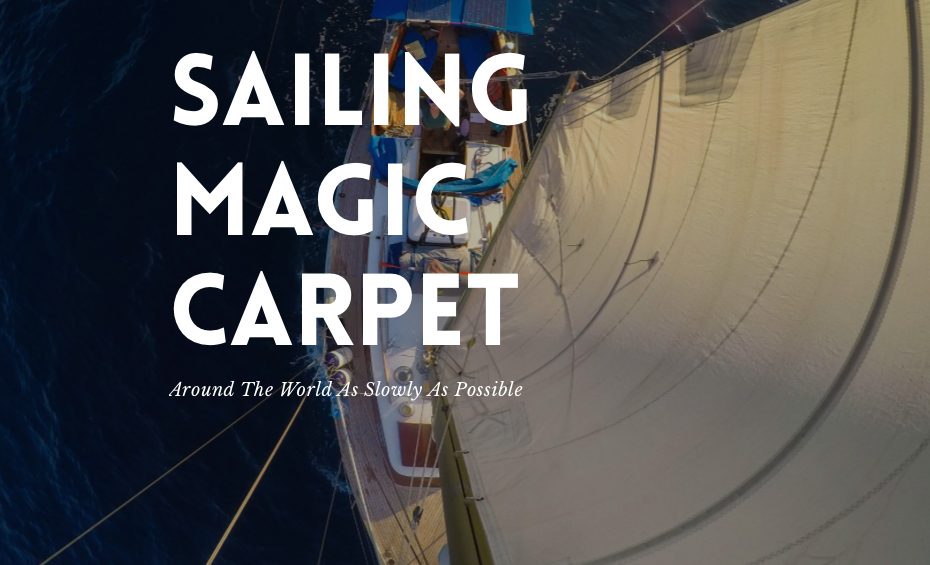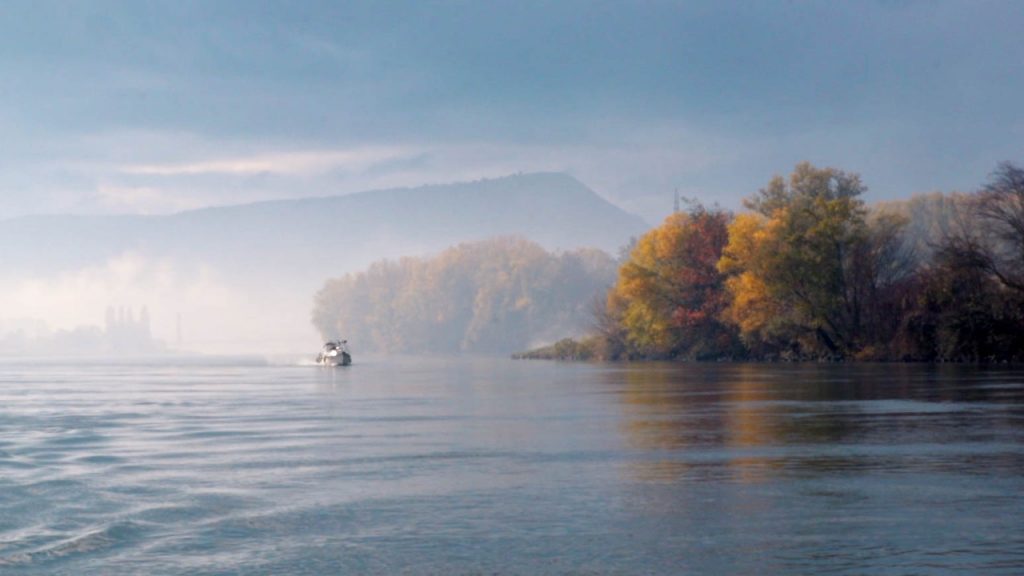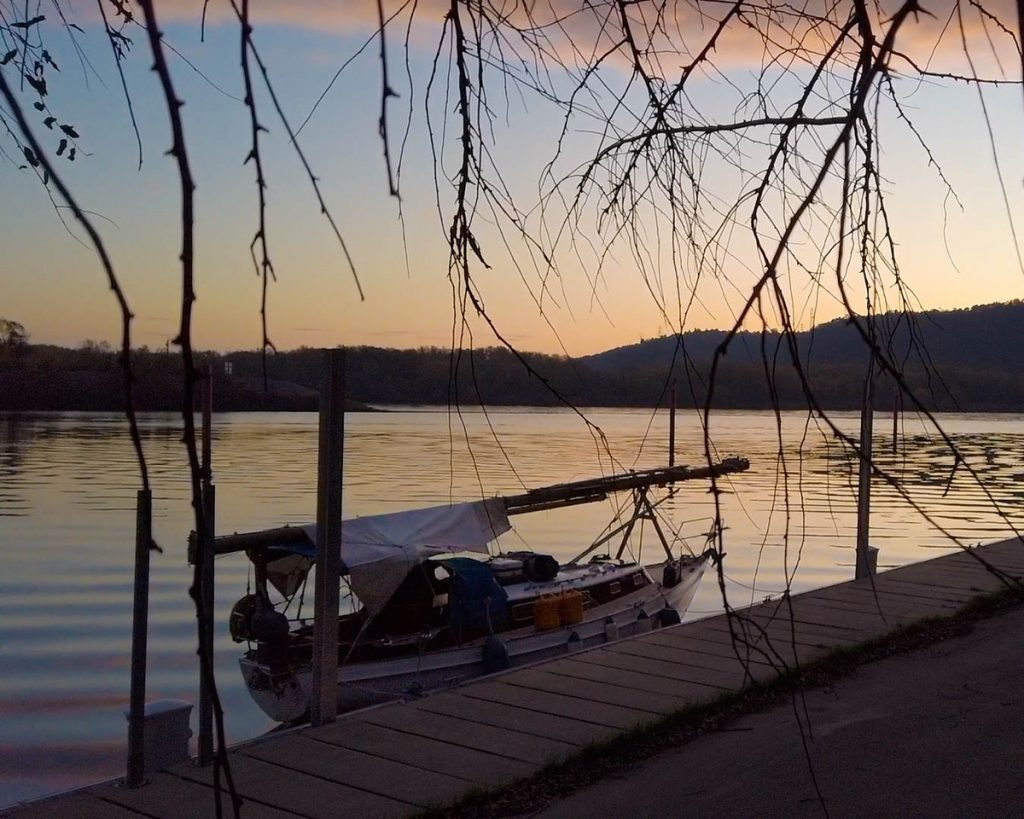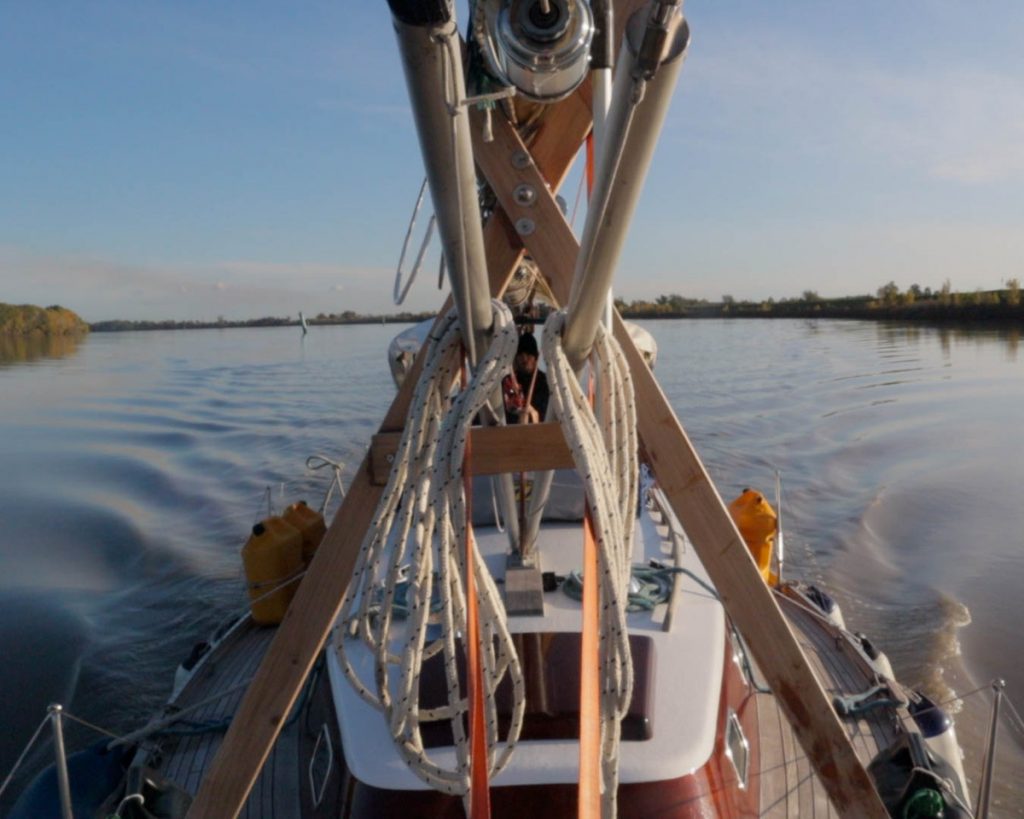
Maya and Aladino Rovegno travel Europe on board their boat Magic Carpet. You can follow their adventures at youtube.com/SailingMagicCarpet
The Rhone River in France is a large river that flows through the city of Lyon, cascading downwards towards the Mediterranean Sea. In ancient times, brave Roman river sailors would construct vast barges to transport freight downriver. They would affix a cross to the front of the barge in the hopes of divine protection during this perilous journey. The Rhone was a swirling, frothing, dangerous river. If the barges made it to the Mediterranean, they were broken up and used for scrap. There was no hope of dragging them back upstream.
It was this river which would carry us and our 28 foot sailboat down to the Mediterranean. My husband, myself, and two friends were attempting to voyage from Switzerland to the sea via France’s inland canals and rivers. We had just emerged from the calm and picturesque Rhine-Rhone canal, where we had been treated to idyllic French vistas and lots of good food. But now, we were faced with the river.

It was June, early summer, with daylight stretching late into the evening and warmth enveloping the world. It hadn’t rained for several weeks which was good news for us: the water levels were lower, and the current wouldn’t be as swift. Not that there wasn’t too much cause for concern anyway. Although the Rhone River is still a large river which demands a certain amount of respect, it has nonetheless been tamed significantly since its wild Roman days. Several huge locks have been installed, which double both as water elevators for ships and hydroelectric dams to power nearby towns. This, combined with routine dredging and even straightening of the river has made it considerably easier for small craft to travel. We weren’t worried.

The Rhone River picked up our small boat in Lyon and carried us proudly downstream. It was an extremely fuel efficient way to travel. Our 21hp Yanmar could run at a relaxed pace –– just enough to allow us steerage to pass safely through the occasional whirlpool. The current did the rest. We swept by pastoral farmland, complete with old crooked barns that overlook vineyards on some far away hill. We steered through forests that dipped down to the water’s edge, as if the branches wanted to sip the fresh flowing water. We passed by nuclear plants and gas refiners one moment, and then through ancient storybook towns the next.

The fastest speed we hit was 11 knots –– a considerable speed, since our cruising speed under engine is only about four. We spent our evenings tied up to public quays in riverside towns –– a considerably different atmosphere than seaside towns. There weren’t many other pleasure craft, since most prefer to traverse the considerably calmer inland canals. The pleasure craft we did see were mostly other sailors, masts laid horizontally on deck, on a quest to reach the Mediterranean.
It only took about five days of leisurely travel to make it to the sea. The river widened and slowed and the air became salty. The Mediterranean blue peeked out from behind the sparse greenery. We had made it. The mast could finally go back up. We could sail again.
